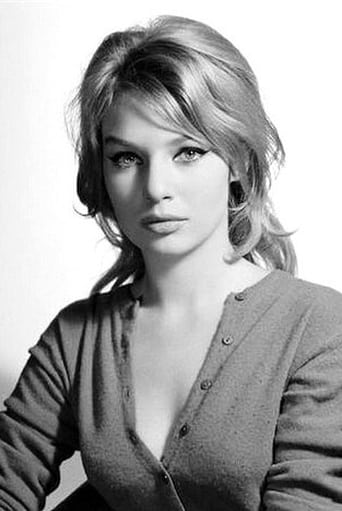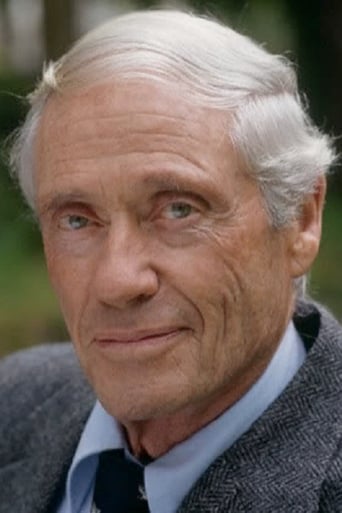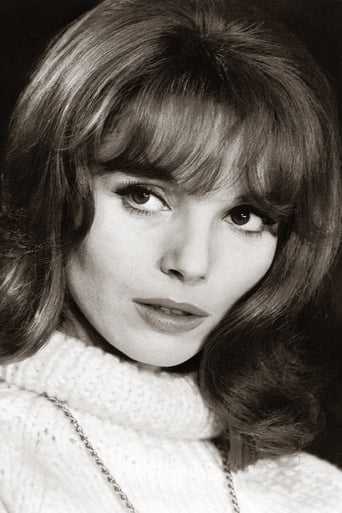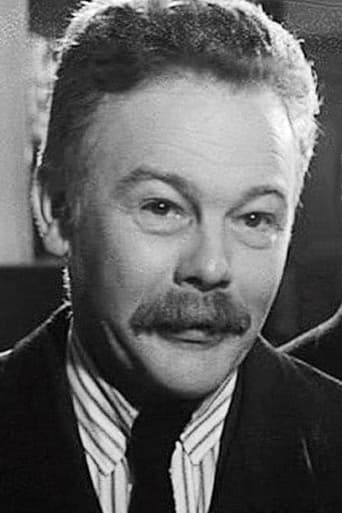Stellead
Don't listen to the Hype. It's awful
Voxitype
Good films always raise compelling questions, whether the format is fiction or documentary fact.
Jonah Abbott
There's no way I can possibly love it entirely but I just think its ridiculously bad, but enjoyable at the same time.
dbdumonteil
....Et Mourir De Plaisir.The first of the two fantasy and horror movies Roger Vadim made and without any doubt ,his best ;actually,it's arguably his very best movie ever,probably his best screenplay,a story which does not fall apart after the second reel;inspired by André Gide's diary in which the writer wondered why a vampire was always ugly :why couldn't it take the shape of a beautiful woman?The title may have been taken from Camille's lines in Corneille 's Horace (1640)after her lover's death caused by her brother (after all,the heroine is called Carmilla and the action takes place in Italy).Claude Renoir's cinematography is a feast for the eye ;it 's really a work of art ,when he depicts the splendid Roman landscapes or when he lovingly films the two actresses ,with subtle lesbian overtones.Till the end ,the director succeeds in sustaining ambiguity -we will never know whether there's a vampire curse or whether it all happens in Carmilla's troubled mind.At a time when unexpected ends often come at the most awkward moment,when they are almost De Rigueur,the last picture is a model of the genre ,a stroke of inspiration which should make today's directors drool.Although set in modern times,the spirit of Edgar Allan Poe wanders in these mysterious settings .One can wonder why Vadim totally failed when he adapted the American writer's "Metzengernstein" in his "spirits of the dead " (aka "Histoires Extraordinaires" ) segment.If you should see only one Vadim movie ,it is definitely the one to choose .
ebiros2
I'm a fan of director Roger Vadim's movie. They have vividness that's uniquely his. This movie is no exception. The details are superb, and eroticism shown can only be put on screen by a genius who's born with talent. The thought provoking plot is built into the picture itself. The mood , the camera angle, all tells a story while heightening the mood. It's an art that I wish more Hollywood directors would learn how to do.Anette Vadim is beautiful in this movie. Obviously Roger Vadim knows how to pick his women.The movie has lavishness, and esprit that more modern movies can't emulate. The movie is low on technical sophistication, or overt gore of vampirism, but you need to see it to appreciate how interesting, and beautiful this movie is.
MARIO GAUCI
Joseph Sheridan Le Fanu’s classic horror short story “Carmilla” (which I own and have read) spearheaded the trend for cinematic tales of lesbian vampires. This is the second film adaptation of it – the first, a very loose one, was Carl Theodor Dreyer’s magnificent VAMPYR (1931; soon to be regaled with two fully-loaded SE DVDs on both sides of the Atlantic) and it was followed in quick succession by the Spanish/Italian co-production CRYPT OF THE VAMPIRE (1963; starring Christopher Lee, a quite good version, of which I foolishly erased a VHS copy I had recorded off Italian TV – the only edition currently available is the Retromedia R1 DVD which, unfortunately, presents the film dubbed in English), the Amicus/Hammer collaboration THE VAMPIRE LOVERS (1970; starring Ingrid Pitt and Peter Cushing) and Vicente Aranda’s eerily erotic THE BLOOD-SPATTERED BRIDE (1972).Director Vadim is better-known for having had great tastes in women (counting Brigitte Bardot, Catherine Deneuve and Jane Fonda among his discoveries/lovers) than for his film-making talents; I myself have only been truly impressed by one of his movies – THE GAME IS OVER (1966) – out of the seven that I’ve watched so far (including this one). BLOOD AND ROSES could well have been the second…were it not for the fact that the edited 74-minute version I watched – prepared for U.S. home video consumption and sporting the Anglicized original title AND DIE OF PLEASURE – is a bit of a mess (the full-length French version is 87 minutes long), English-dubbed (naturally), panned-and-scanned (of course), and preceded by one of the phoniest credit sequences I’ve ever witnessed (that said, a reasonable photo gallery was included with the DivX copy I acquired, which starts automatically soon after the main feature). Needless to say, I’d long wanted to watch this – but, bearing in mind the state of the edition I ended up with, in spite of its many pictorial rewards, it wasn’t an ideal viewing experience…and one can only hope that, given the amicable relationship between Paramount (who owns the U.S. rights for BLOOD AND ROSES) and Criterion, the film will turn up someday – in the original French language and uncut – on a decent official DVD (after all, the latter’s vast and considerable collection already numbers Vadim’s debut feature …AND GOD CREATED WOMAN [1956] among its releases).Anyway, the cast is an interesting combination of international movie stars (Mel Ferrer – who, coincidentally, has just died aged 90 – and Elsa Martinelli), newcomers (Annette Vadim nee' Stroyberg) and even a director (Marc Allegret, who had given Vadim an early start when he engaged him as his assistant). The film makes a fair attempt to update the LeFanu original to contemporary times – though, rather than make Carmilla and Millarca one and the same, we get the former being possessed by the latter: this is quite subtly done (at least in this reduced form) as Millarca’s personality in Carmilla manifests itself in her suddenly knowing the steps to an ancient dance and her incongruous preference for a classical record! As a matter of fact, this medieval quality permeates the whole film – thanks also to Jean Prodromides’ haunting melancholy score (which is then effectively speeded-up during the ‘horror’ sequences). Incidentally, the film was clearly intended for the Art-house crowd (resulting in being fairly talky for the first two-thirds) – even if it’s not quite in the same league as Georges Franju’s EYES WITHOUT A FACE (1959), an altogether more accomplished and successful marriage of the highbrow and the exploitative.That said, it contains any number of striking sequences: the costume party (with a fireworks display for backdrop) in which Ferrer dons a bat mask fitted with a pair of wings!; Stroyberg’s wraith-like pursuit of her first victim (her stilted performance is actually just right for the character) – despite its being obviously shot day-for-night; the wilted rose on Carmilla’s white dress turning to a huge blood stain (incidentally, this vampire registers in a mirror!); Stroyberg’s seduction of Martinelli on a rainy night inside the Karnstein family greenhouse (both women also love Ferrer, though he and Stroyberg are related!); Martinelli’s surreal, erotic and blood-spattered black-and-white dream sequence towards the end (in which, among other things, Stroyberg as Millarca operates on her naked self as Carmilla!) – which is the film’s undeniable tour-de-force; Carmilla’s demise as she gets staked during an explosion (the location being a cemetery holding remnant shells from WWII); and the very last image when another wilted rose betrays the fact to the audience, but not the oblivious Ferrer, that Martinelli has herself been turned into a vampire (the latter starts off as an ingénue but slowly, and believably, matures through her attachment to Carmilla).By the way, some weeks back I happened upon a recent TV interview with Martinelli; she seemed deservedly proud of her cinematic legacy (including a successful stint in Hollywood) but, unsurprisingly, this film – or another good one where she was also involved in lesbianism, Lucio Fulci’s giallo ONE ON TOP OF THE OTHER aka PERVERSION STORY (1969) – wasn’t mentioned at all…
Maciste_Brother
BLOOD AND ROSES, or ET MOURIR DE PLAISIR (to die of pleasure), is a spotty Eurocult horror film directed by Roger Vadim that works better as an experimental film than an actual movie that's supposed to entertain. I enjoyed watching this movie for the amazing atmosphere, some of the great visuals and the truly beautiful score. It's truly unique in this case. I also enjoyed the narration, which from what I've heard is not included in the original French version. Personally, I cannot imagine this film without narration. There would be extremely long moments with nothing going on.But BLOOD AND ROSES falls flat when it plays like a movie, with characters too sketchy for anyone to care about or moments which now look positively dated, like the drive through the country with the two men and the two little girls. That scene stands out for all the wrong reasons. Or the discussion in the kitchen, with the maid and all. Those moments are dated and clash with the modern, almost ahead of its times dream or horror sequences. On one hand, BLOOD AND ROSES feels hopelessly outdated and yet on the other hand it feels very contemporary, with the dream sequence being the highlight. I can't imagine what people thought of this scene when they saw it back in 1960.If you watch BLOOD AND ROSES for the Goth moments and the music, you won't be disappointed but if you expect some sort of Hammer style horror film, with lotsa action, this film won't be your cup of tea. I give it 7 stars for the atmosphere and music.







